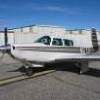Why do people freak out about ADS-B and mid-air collisions?
-
Members Online
- eman1200
- phxcobraz
- Jarerh
- wings_level
- akb3
- Scooter
- wombat
- PT20J
- bluehighwayflyer
- AdamJD
- CCAS
- TCC
- Flyler
- Justin Schmidt
- hammdo
- Glenn
- Ragsf15e
- Vulcan81
- PeteMc
- N201MKTurbo
- William Munney
- Deb
- 00-Negative
- Skyland
- IvanP
- KZNY
- Bolter
- alexz
- AF M20J
- bixmooney
- BillyT0020
- Mmrkulic
- mooniac58
- Culver LFA
- Mike A
- Jetdriver
- laytonl
- Max Clark
- Schllc


Recommended Posts
Join the conversation
You can post now and register later. If you have an account, sign in now to post with your account.